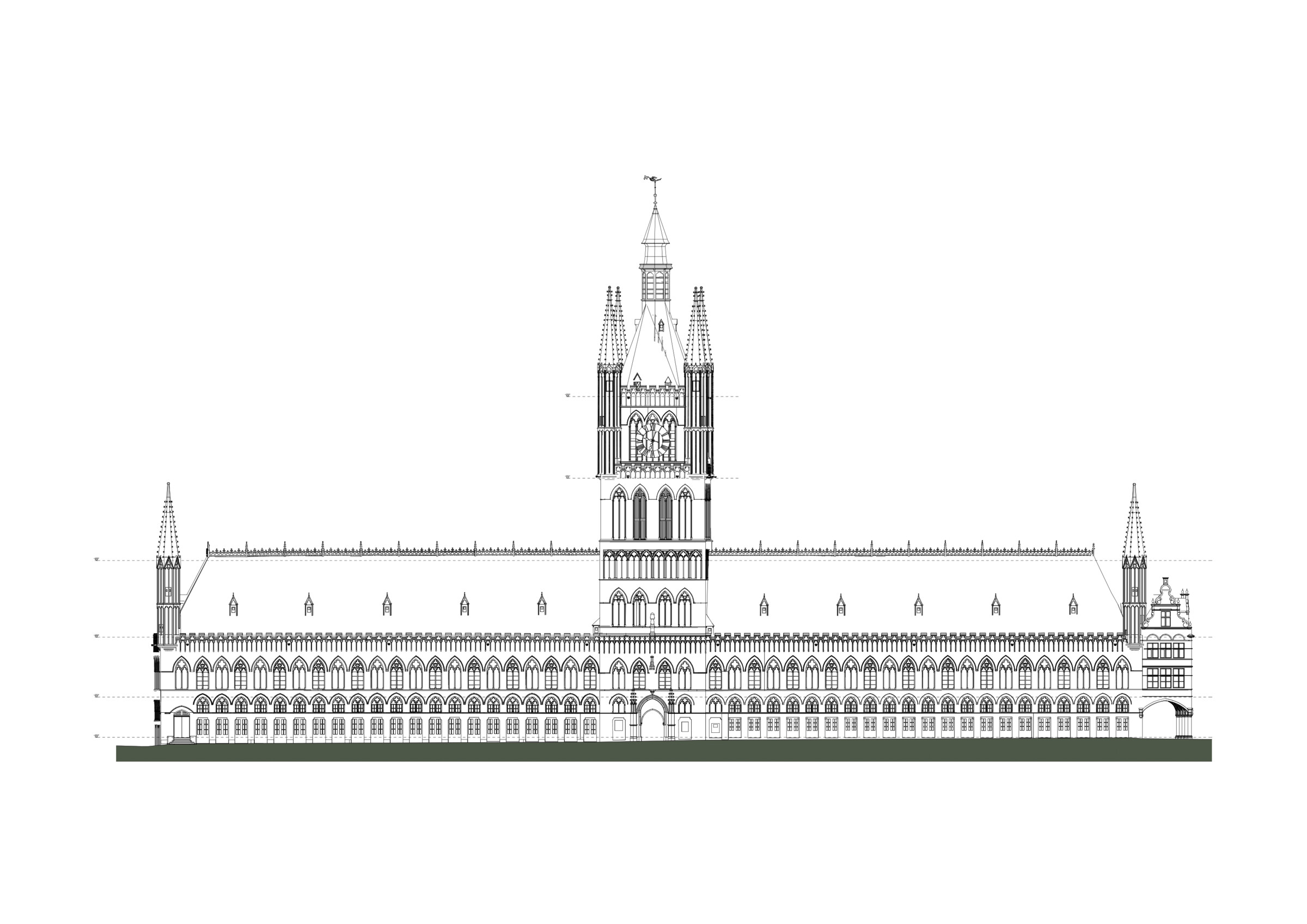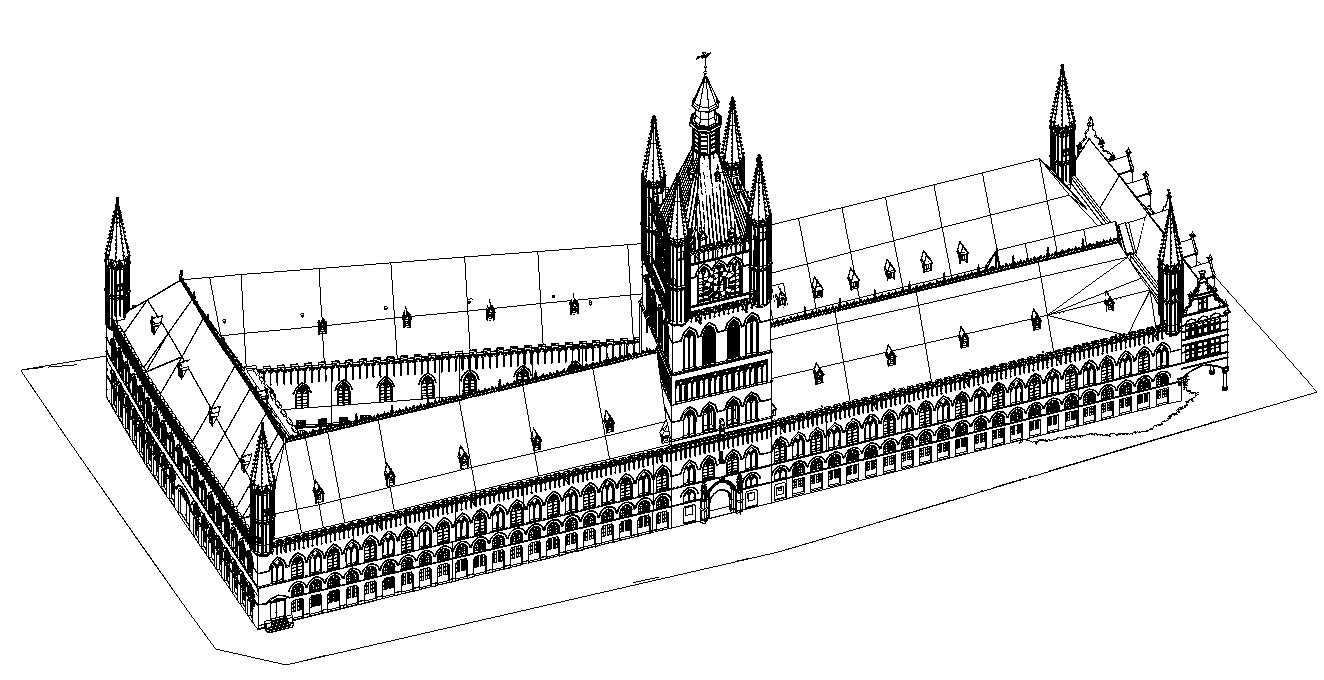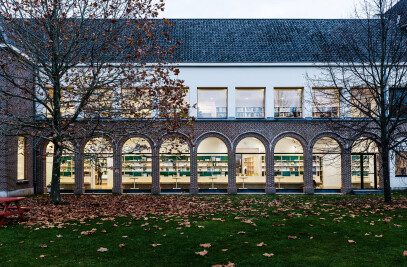Ever since the Middle Ages, the image of the Grote Markt in Ypres has been determined by the imposing Belfry and the adjoining cloth halls. After the First World War left the West Flemish town in ruins, it was decided to completely reconstruct this iconic monument based upon historical plans. Today, the building techniques used at the time have revealed their shortcomings.
B-juxta, together with ARTER, was commissioned to carry out an in-depth restoration of this monument. The works include a number of major challenges such as a complete replacement of the internal concrete structures, a brand new wooden spire and a total façade cleaning. All of this should preserve the cloth halls and Belfry – the Ypres icon par excellence – for many generations to come.
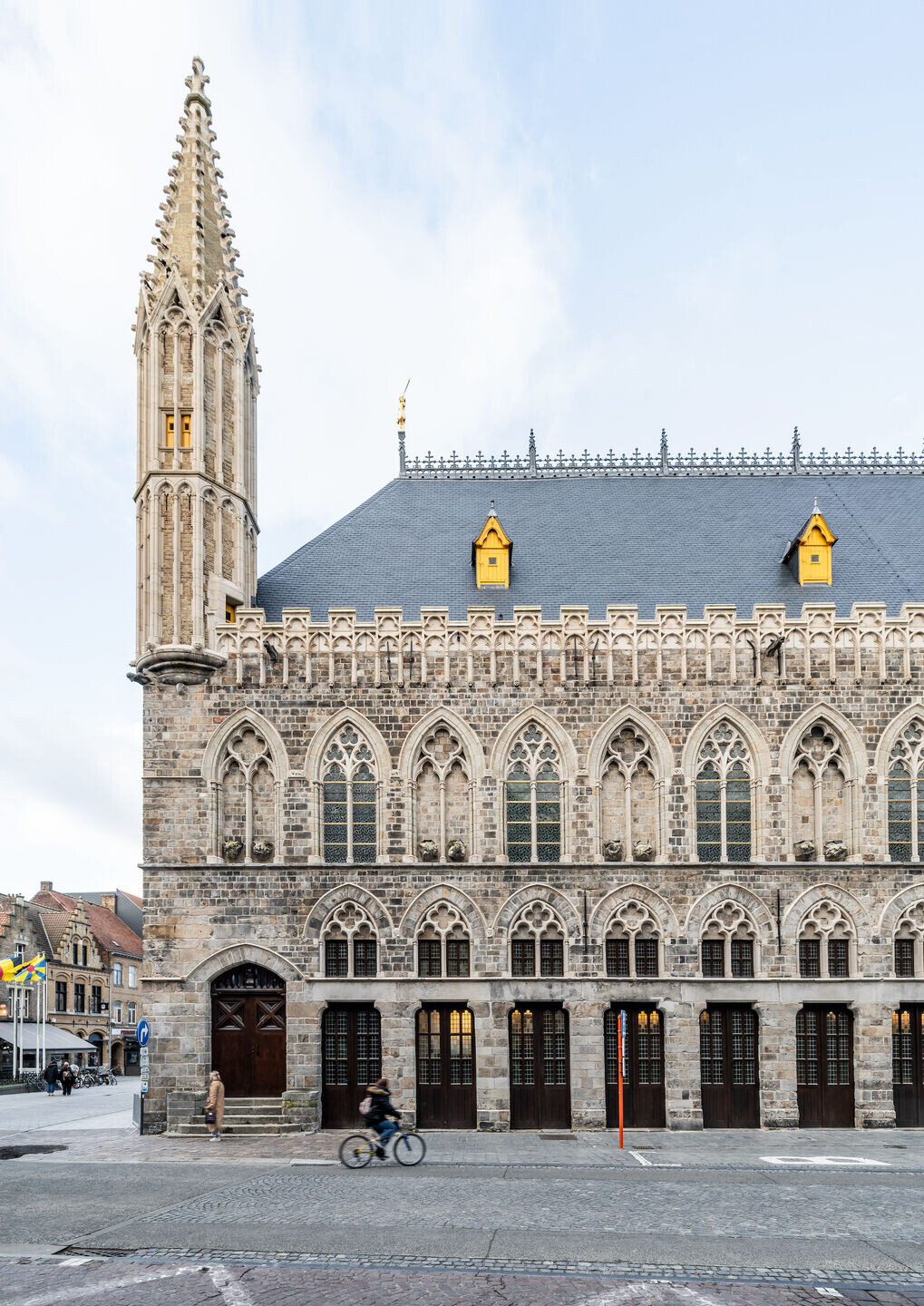
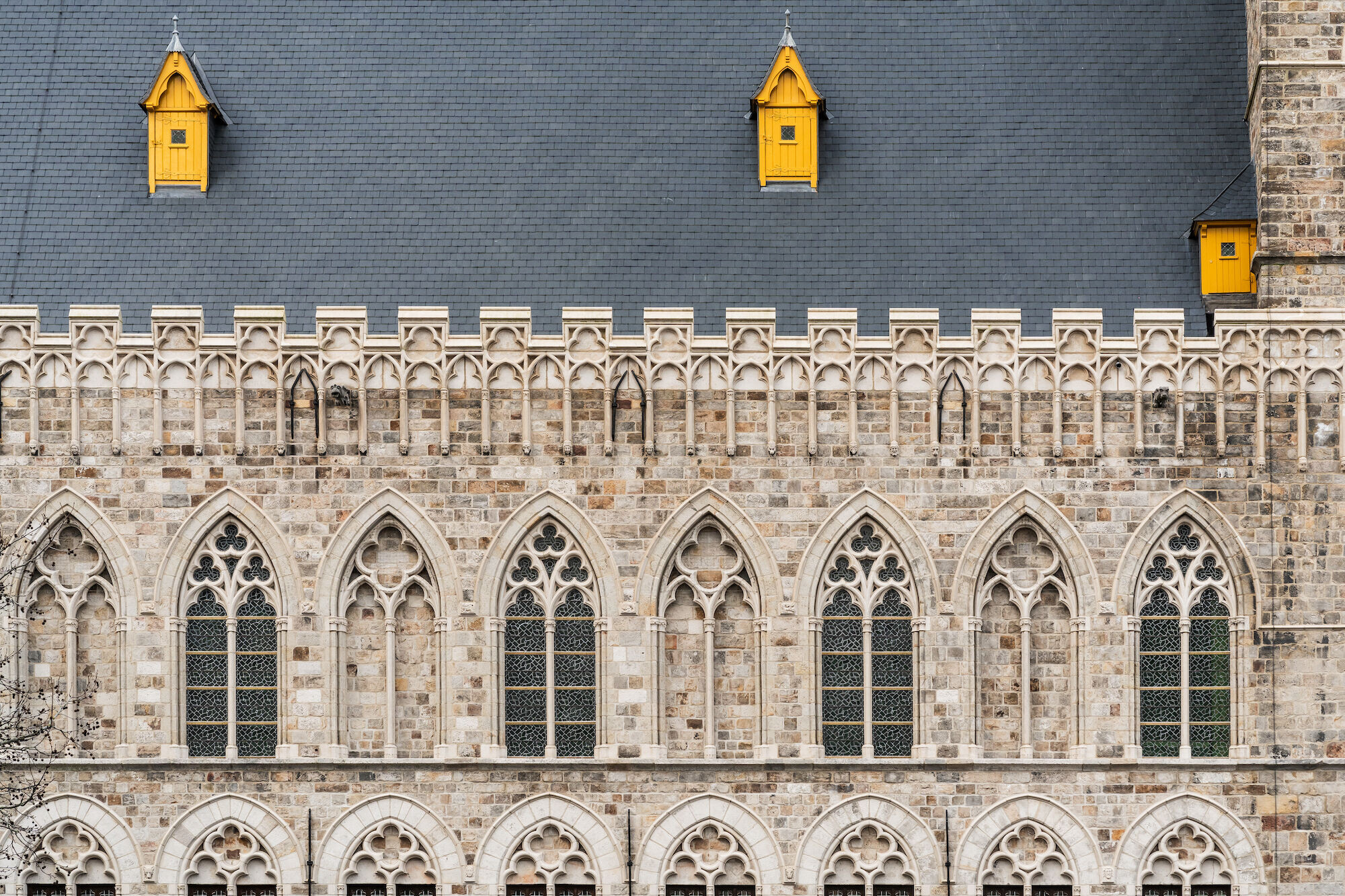
Rich history
Ypres’ belfry and cloth halls are today the largest civilian Gothic-style building complex preserved in Europe. The first stone was laid around 1250 as a result of the cloth-making boom, which made Ypres a European trade metropolis in the Middle Ages. The entire complex was completed in the 15th century. For many centuries, the cloth halls have formed the image of the Grote Markt in Ypres. After the disappearance of the cloth trade, the building had many other uses. Successively: school, academy, police station, various markets, soldiers’ quarters, warehouses, concert hall, banquet hall and exhibition hall. Some of the halls were also used as town halls.
During World War I, Ypres and also the centuries-old cloth halls were completely destroyed by German bombing. The damage was enormous, but after the war, a lot of hard work went into a complete reconstruction. Today, the halls house two museums: the In Flanders Fields Museum and the Yper Museum, with additional exhibition halls and a museum café.


3D measurement
To ensure a smooth layout of the six restoration files, a full 3D scan of the building was initially made. From the point cloud, a Revit model was generated, which is gradually being further detailed by the BIM teams of B-juxta and ÁRTER. All joinery and dormers are measured and drawn out manually.
The entire wooden spire structure of the tower was also scanned internally and worked out in 3D.


Petrographic survey
With the façade plans in hand, a number of visual inspections of the façades were then done with an aerial platform. The damage images were recorded and an inspection also took place to identify all the different types of natural stone. Using a number of drill cores, the stone types and mortars were further analysed and determined.
Façade cleaning research
Extensive testing was done at a number of designated locations to determine the best façade cleaning strategy.


Stability studies tower
Modern construction techniques were used internally in the reconstruction of the belfry tower. For example, the floor slabs were constructed from concrete slabs on reinforced concrete beams. Extensive investigations were carried out to determine whether the floor slabs were still sufficiently stable.
The four arkel towers (corner towers) were also in poor condition. A specific restoration strategy was determined for them.
One of the most radical works is undoubtedly the restoration of the wooden spire, to which a lot of attention was paid during the preparation of the file.
We also checked whether the foundations were stable enough by means of soil probes.
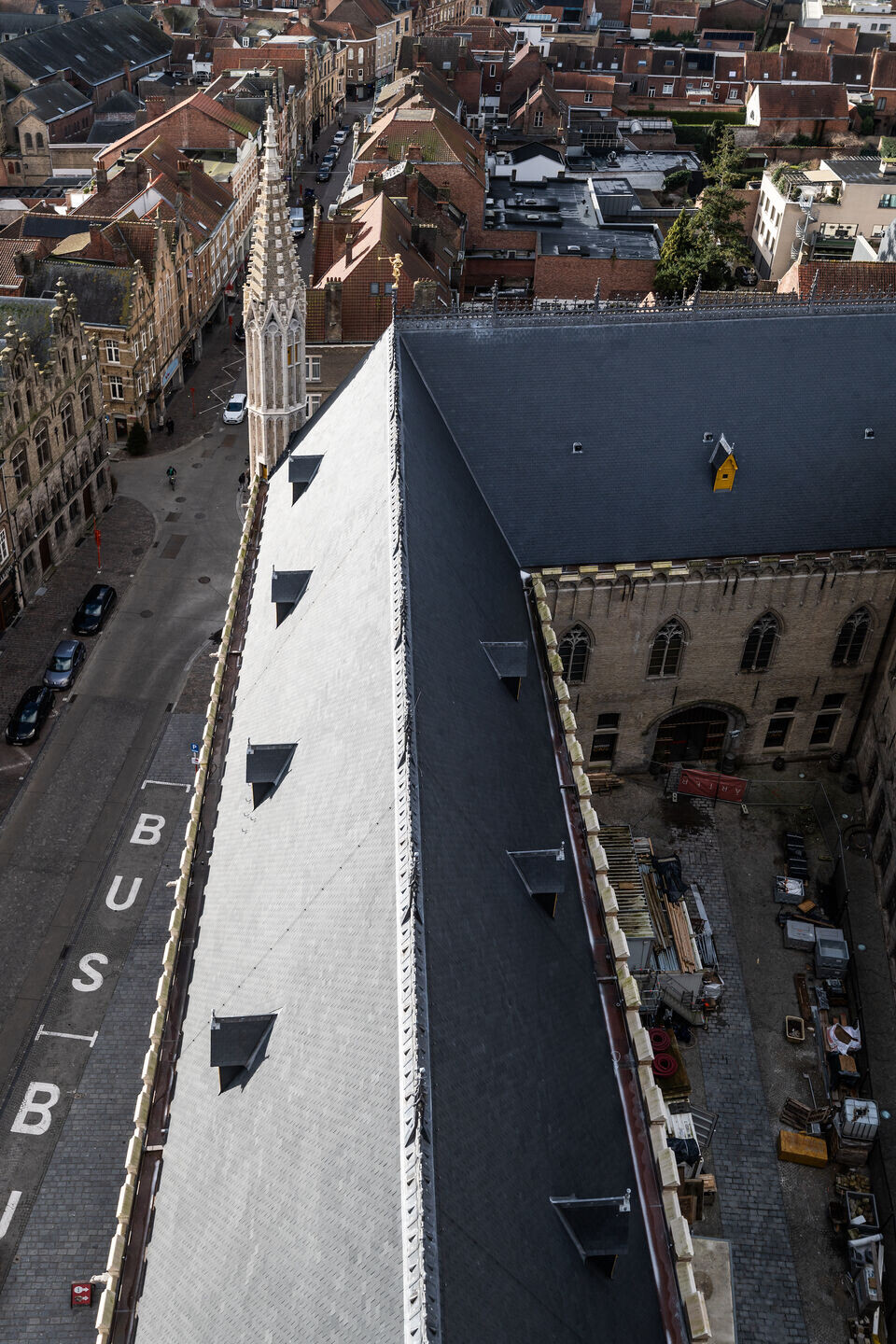
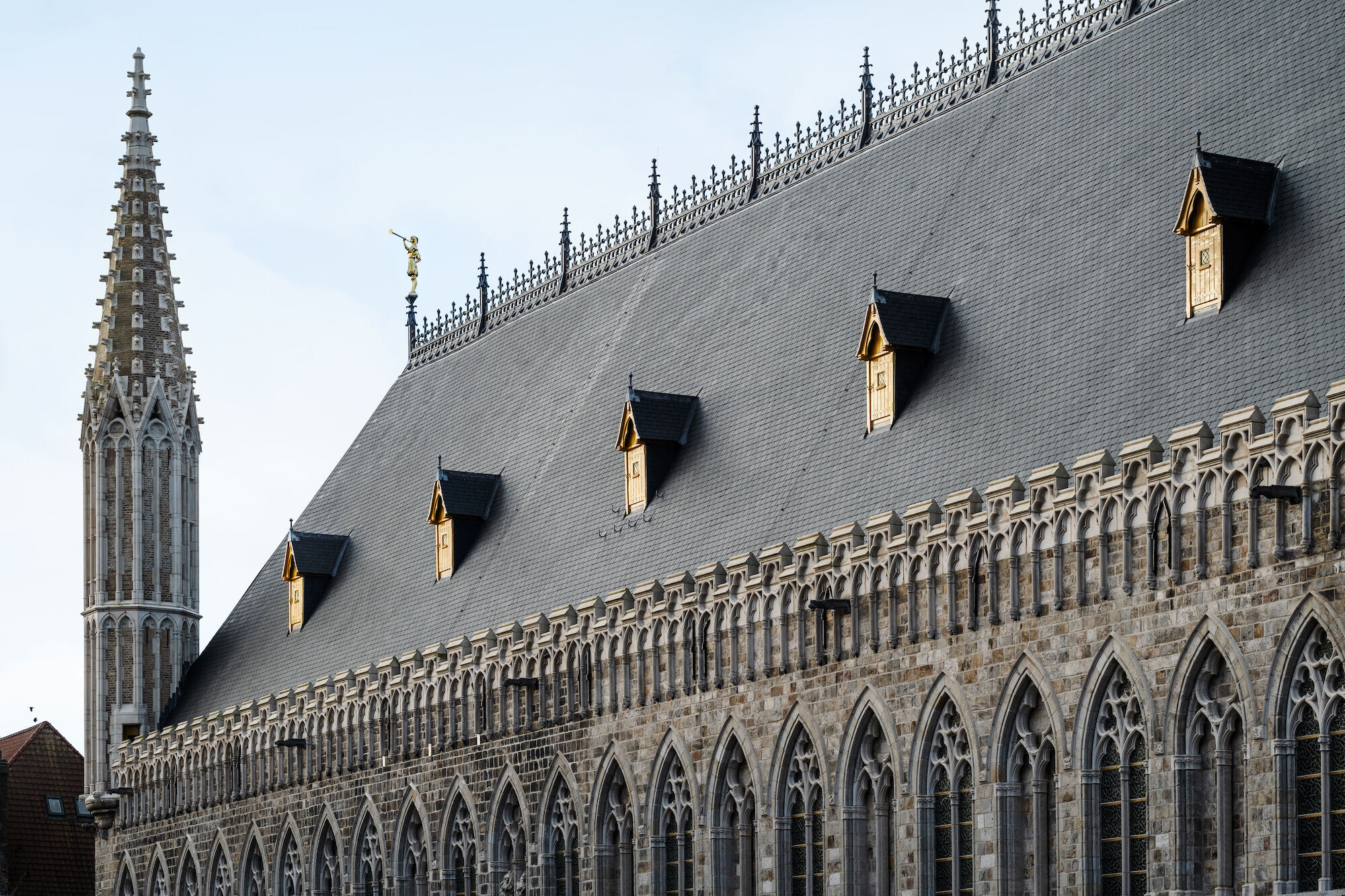
The first phase went into execution on 14 September 2020 and was provisionally delivered on 8 March 2022. This was immediately the most far-reaching phase.
Content of works:
- Dismantling and reconstruction of the entire spire. After all, the condition of the wood in the spire was extremely poor.
- The ark turrets were completely dismantled and identically reconstructed.
- The two upper floor plates were reinforced / replaced according to model. This involved reconstruction in reinforced concrete and reinforcement of the beams with fibreglass reinforcement.
- All façade elements (mainly Atrecht sandstone, Euville and brick) were repaired, reinforced and replaced where necessary.
- All exterior parement was cleaned and repointed where necessary. Most of the cleaning was done by steam cleaning.

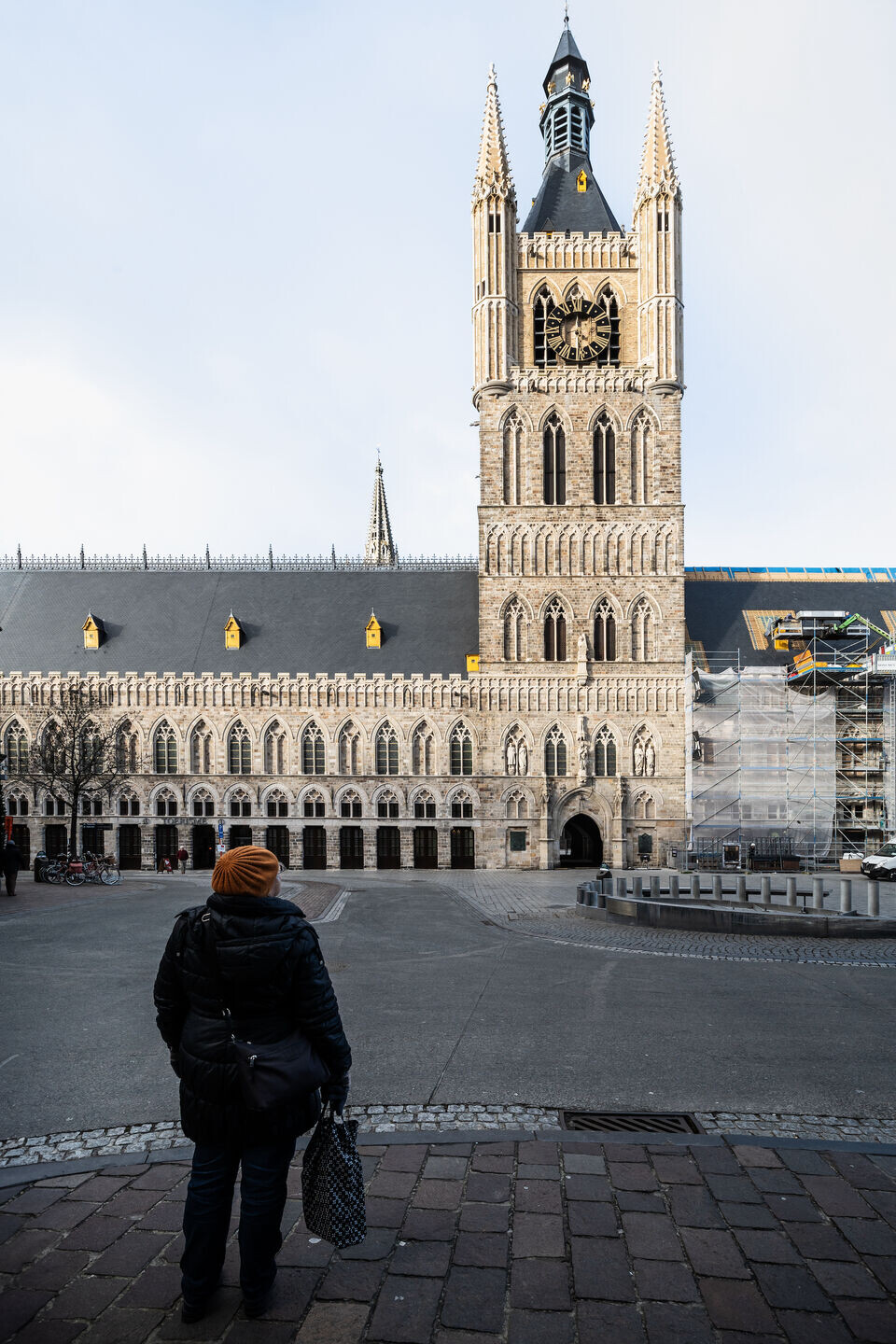
After phase 1, the follow-up phases focus on energy optimisation of the roofs of the Lakenhallen.
Content of works:
- All roofs were fitted with a thick layer of wood wool insulation in the form of a sarking roof. By using this, all interior heritage values remain completely untouched.
- The dormers were raised but otherwise unchanged, as an internal skylight was provided in the insulating shell of the pitched roof. Thus, all details of the slender dormers are integrally preserved.
- The lead ridges were integrally replaced because the poor condition of the lead no longer allowed restoration.
- Along with the raising of the roof planes, the lead ridges were also raised and executed according to historical models. The trumpet player was restored to its former glory and given a new gold leaf cover.
- The façades, like the tower façades, were integrally gently steam cleaned. Supplemented by microblasting of the profiling of the natural stone.
- Where the condition of the euville was in poor condition, limited replacements were made and natural stone restoration was applied.
- Nearly all joinery was dismantled and restored in the workshop. This is also the case for the stained glass.
- The original material was preserved to the maximum and only limited parts of joinery and glass were replaced.


Team:
Architects: B-juxta
Collaboration: ÁRTER architects
Stability: Abicon
Project Architect: Mieke Goegebuer
Design Team: Anton Witdouck, Mathias Vandepitte
Exploitant: In Flanders Fields Museum, Yper Museum, Museumcafé
Project Team: Mieke Goegebuer, Mathias Vandepitte, Anton Witdouck
Photographer: Lucid
